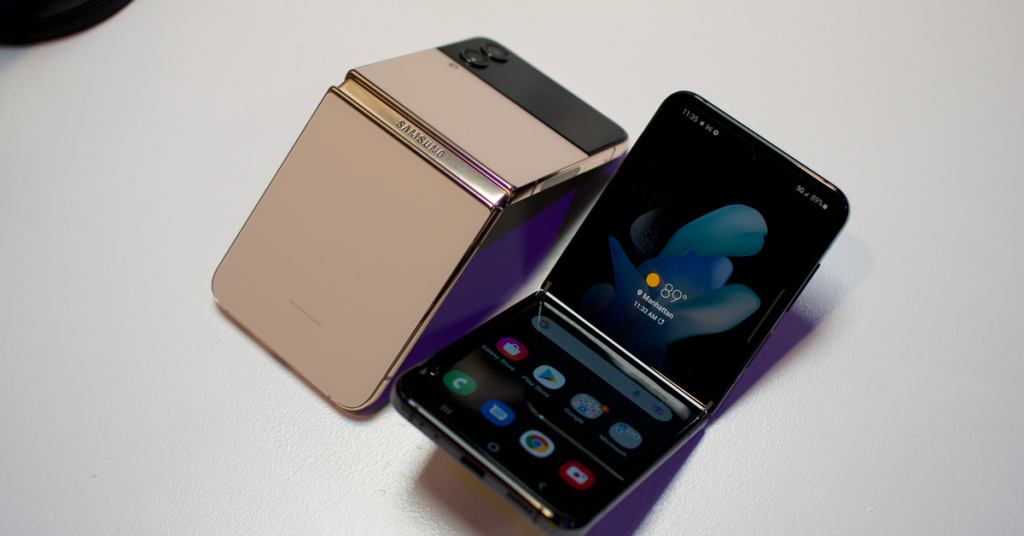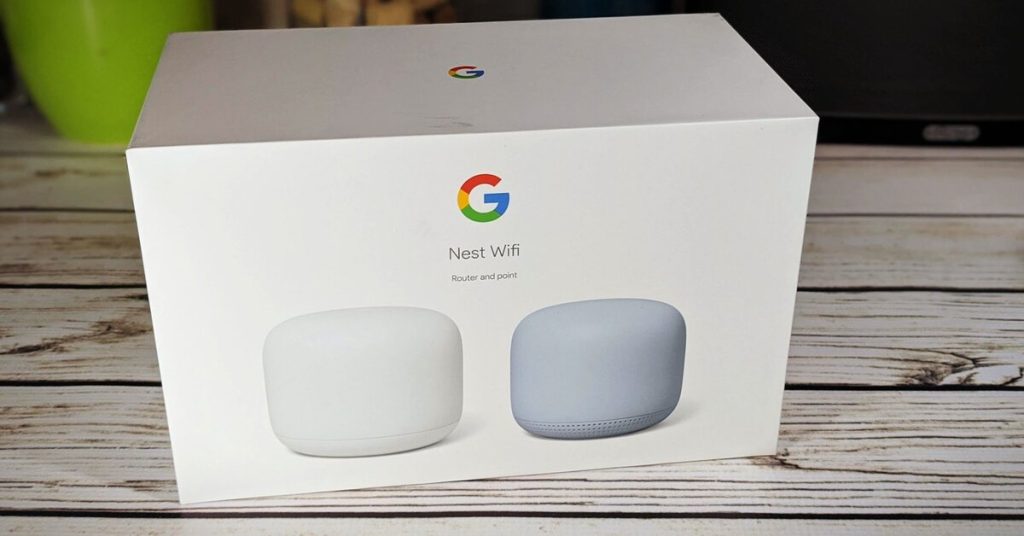The Samsung Galaxy Flip 4 is a solid folding phone that seems to lag behind its peers by one generation. The improvements over the Flip 3 from the previous year are so slight that this phone could primarily have been a firmware update. As a result, the Flip 4 is, like its predecessor, an impressive technical achievement with a few flaws that, if fixed by Samsung, would significantly improve the user experience.
The Flip 4 is what happens when you combine a smartwatch, and a phone, much like the Galaxy Fold 4 combines a tablet and a phone experience into one device. Even though the Flip 3's tiny 1.9-inch cover screen has a few more practical features than the Flip 4, such as the ability to send quick canned text responses, its functionality is still severely constrained. Similar to a smartwatch attached to the back of a foldable phone.
I genuinely like this phone a lot, even though it isn't much different from last year's model and there is still room for improvement — but not for the reasons I initially anticipated. Compared to a traditional slab-style phone, it is much simpler to read a notification on the small cover screen, dismiss it, and continue with my day. Despite the cameras being fairly standard, I enjoy taking pictures with them. It also requires less focus than the majority of smartphones. Even though Samsung unintentionally did this, I appreciate it.
Although the Flip 4 is small, I wouldn't describe it as a small phone. It's a certified Big Phone once you open it, which happens 90% of the time when you need to use it for something. But when folded, it fits easily into my jeans' front pocket, which is more valuable than I had anticipated.
What was good about the Flip 3 is still good here: it's waterproof, has a great main screen, and costs $999, which is high but not as high as the $1,799 Fold 4. But whether you should buy it or not depends on what you want. I think most people will want the (hopefully) next version of this device, which will have a bigger, more useful cover screen and a thinner body. Right now, it's both a great little gadget that I'm tempted to buy for myself and something that doesn't live up to its full potential.
You still need two hands to open it because the hinge is still strong. You can pry it open with one hand and flip it with the other to open it all the way, but that makes me feel sick. When the phone is closed, there is still a gap between the two halves of the screen, and it is the same thickness as Fold 3: The screen is 17.1mm wide at the hinge and 15.9mm wide where the two ends meet. In its specs, Samsung calls that the "sagging" side, which I thought was pretty cool.
This is how folding works, but I didn't understand it until I started using the phone daily. It's as thick as a regular phone when it's open and looks chunky when it's closed, even though it only takes up half of the phone's surface area. It fits much better than the typical slab-style phone on my small bathroom sink counter and crowded nightstand.
I still can't get over how cool it is that I can put this whole phone in the front pocket of my jeans. I usually put it in my back pocket when I'm out and about but not using my phone. Every time I sit down, I have to take it out of my pocket or put it in very danger of being crushed. With the Flip 4, I don't even have to play this dangerous game. It fits in that front pocket whether I'm sitting or standing. It feels tight like I'm carrying a wallet, but it's much safer.
The Flip 4, like the Flip 3, has an IPX8 rating, which means it can be submerged in freshwater, but it isn't sealed against dust. That's because, with the hinge and everything, it really can't be. There are little brushes inside to keep dust from getting sucked in and ruining the screen, but Samsung doesn't make any promises.
The main screen could also be weak because it's made of ultra-thin glass that's easier to scratch and break than a normal phone screen. Samsung says that the display on this version is 45 percent stronger, and the screen protector on top, which the user can't remove, is stuck in place with stronger glue to keep it from coming apart and bubbling up, which was a problem with some of its previous devices.
Even so, when the Flip 4 is folded, it feels solid. It feels safe because of how heavy it is, how the glass is reinforced, and how the outside is made of aluminum. It doesn't feel risky to spend $999 on this phone. Still, I don't know how well it will hold up over time against dust and normal wear and tear so that I wouldn't throw all caution to the wind.
I have nothing wrong to say about the main 6.7-inch screen on the Fold 4. It has a top refresh rate of 120Hz for smooth scrolling and gets bright enough to use in direct sunlight. There is a crease, but I quickly got used to it, and it never bothered me much. When you use the screen in Flex Mode, which is when you hold the phone in an L shape and move the content to the top half of the screen and the controls to the bottom half, you now have a new option.
You can turn on the Flex Mode panel, which has a new touchpad feature, in apps that don't have it built in, which is most apps. It lets you move the cursor around in the top half of the screen. It's helpful if you need to use the phone without your hands, but the small top half of the screen quickly gets crowded and hard to use. It's helpful for apps like TikTok, where you might want to use Flex Mode for a short time to start and stop recording, but I wouldn't want to use it for a long time.
Then there's the cover screen, the little guy. It's an OLED, and the fact that it's only 1.9 inches holds it back. If you tap a notification, the phone will tell you to open the main screen and keep going there. You can use the back cameras to take selfies, check your messages and the weather, and do a few other things that most smartwatches can do.
With Flip 4, you can answer texts quickly, which is nice. But the cover screen can do a few more things than it could last year. You can talk to your phone to send a text like you could with the Flip 3 or choose from a list of common phrases like "On my way" and the subtly passive-aggressive "Great." They don't change based on the situation, like suggested quick replies in the entire Messages app or Gmail; the list is a little long. You can't change them, either. For example, you can't change "OMG!" to a calmer "omg." Like the new software features on the Fold 4, Samsung won't say if these things will be added to older foldable phones or not. In theory, nothing about the Flip 3 would stop this from happening.
You can also see how your selfie photos and videos will look in real life by double-tapping the screen while in quick shot mode. The default preview fills the whole screen, showing only what's in the middle of your shot and not what's at the top and bottom. I'm glad to have the option to see what's outside the frame, but I checked, and the preview is the size of a postage stamp. Samsung left this out the first time because there was a good reason for it.
You can also take portrait mode selfies with Quick Shot now. Since they come from the phone's primary camera, they are better than most portrait mode selfies. That's a cool trick for a flip phone. A quick settings panel gives you access to more features, like the flashlight. Thankfully, the phone tells you to turn it away from your face before you press the volume key to turn it on.
You can also set up up to three contacts that you can call directly from the cover screen, and there's a new widget that lets you start SmartThings scenes. The timer, weather widget, and music controls from the old cover screen are also here.
I feel like I don't choose to look at my phone a lot of the time when I do. I wouldn't say I like how it takes 10 or 20 minutes of my time at a time when all I wanted to do was set my alarm or check the weather for the next few hours. Sure, most of this could be done with a smartwatch, but then I'd have to pay attention to something else on my wrist, which I might not want. I like that the Flip 4 lets me do these little things without opening the phone.
In any case, the lack of distractions seems more like an accident caused by the fact that the cover screen isn't handy than a deliberate design choice. It would be nice to have a bigger cover screen, but if Samsung does add one, I hope it finds a way to keep this minimally intrusive experience that it seems to have made by accident.
As far as regular phone things go, the Flip 4 has everything you need. There is a Snapdragon 8 Plus Gen 1 processor, the top-of-the-line Android chip right now. All versions of this chip have 8GB of RAM. The Flip 4 feels as fast and responsive as a $999 device, and the screen updates quickly. There is a 3,700mAh battery that is bigger (up from 3,300mAh). The Flip 3's battery life wasn't bad, but it wasn't one of the phone's best features. The battery seems to work a little better now that it has a bigger capacity and a chipset that uses less power. I can get through a hectic day with a lot of video streaming, GPS navigation, tethering to a mobile hotspot, and some video recording without having to charge the battery, which is no small feat for such a small battery.
The Flip 4's cameras don't look perfect for a phone that costs as much. That was true of the Flip 3 and earlier Flip models; again, Samsung hasn't done much to improve them this time. The pixels on its 12-megapixel F/1.8 primary rear camera are a little bigger, which may help it gather more light, but that's all. It has the same 12-megapixel ultrawide and 10-megapixel front-facing cameras as the Flip 3.
Even though the specs aren't excellent, I love taking pictures with this phone. It has nothing to do with the size of the pixels, the sensors, or anything else. It's the way the shape can be changed. I can put it on a table and record a video of my toddler and me without having to hold it. My grandparents love seeing videos of their grandchildren, and I'm happy to give them what they want. Because of how the built-in microphone is set up, it doesn't pick up sound well in that configuration. Thankfully, grandparents don't care about that kind of thing.
I can also open the phone in Flex Mode, move the image preview to the bottom half of the screen, and shoot from the hip. This lets me get more natural, candid shots because I'm not putting the phone in front of my face, which clearly shows that I'm taking a picture. I could take photos of people on the street if I wanted to. If I walked around Seattle with my Samsung Z Flip 4, I'd feel like a real Henri Cartier-Bresson.
I even put the phone into Flex Mode and made a video for my first TikTok. A TikTok! How old I am! Samsung wants you to do all these things with the phone, and maybe I'm a sucker, but I did them, and it was great. I don't want to use a slab-style phone to retake pictures. The only thing I don't like about the Flip is that it doesn't have a zoom camera. With its 3x telephoto lens, the Fold 4's portrait mode photos look great, and it would be so cool to have it in this shape. The Flip only has a wide-angle portrait mode, and the pictures still look like they were cut out of cardboard.
In terms of picture quality, everything is fine. It has the typical saturated color of a Samsung. The photos are fine when there isn't much light, but sometimes the noise reduction is too substantial. Same thing with video: clips are noisy when there isn't much light, and when there isn't much light, they are smoothed out. That is easily within the acceptable range for a flagship phone's image quality, but I wish Samsung would do better. Give me a sensor with a higher resolution, clever ways to group pixels, and better low-light image quality. Give me a three-times telephoto lens. This is the "fun" foldable phone, so I guess it won't be the first to get a new camera. However, for another year, Samsung can't afford to keep the same camera hardware.
It seems rude to ask the Flip 4 for more. It can be folded. It doesn't get wet. Great performance. It has cameras that aren't too bad, and you can use them in ways you can't with a slab-style phone. The price is not $1,800. But we can and should expect more from this phone because it could be much better.
Even though I like how the 1.9-inch cover screen doesn't get in the way much, a bigger screen like the one on the Motorola Razr would be more helpful. The cameras could be better. Most $1,000 phones have a telephoto lens and imagine how nice it would be if this one did too. There's also the question of how long it will last and what will happen to its insides after years of being in the dust. No one is sure because this phone hasn't been around long enough for anyone to know.
As for me, I'm sold. In the last year, I've used a lot of phones. Many of them were good, and some of them were great. But none of them made me feel like they would change how I use my phone as much as the Flip 4. It hasn't gotten going yet, but I like where it's going.


